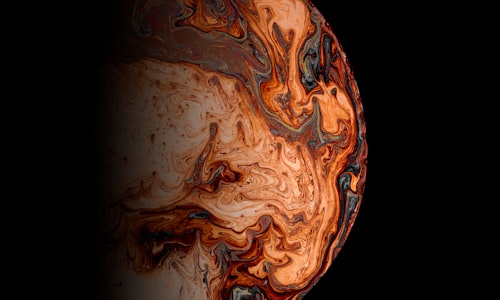Neptune facts
While investigating facts about Neptune, I found out little known, but curios details like:
The D-Day(June 6) Crossword Panic of 1944 in which, in the 35 days before the invasion, 5 obscure, top-secret code words appeared in the Daily Telegraph puzzles..The words 'Utah, Omaha, Overlord, Mulberry and Neptune' triggered a MI5 investigation.
The planet Neptune may have a liquid diamond ocean with solid floating diamond-bergs.
In my opinion, it is useful to put together a list of the most interesting details from trusted sources that I've come across. Here are 50 of the best facts about Neptune I managed to collect.
-
The fade-out at the end of Holst's Neptune was achieved by slowly closing the door on a female choir as they sang in another room.
-
Uranus and Neptune are not "Gas Giants" as is commonly believed, but belong to a separate category of giant planets called "Ice Giants." This is because less than 20% of their mass is made up of hydrogen and helium. True gas giants like Jupiter and Saturn are over 90% hydrogen and helium.
-
Neptune has the strongest winds in the Solar System: 2,100 km/hour (1,304 mph).
-
Due to incredibly high pressure on Uranus and Neptune, it is theorized that oceans of liquid diamond exist on the surface of the planet, with solid "diamond-bergs" floating on the surface
-
It might rain liquid neon on Jupiter and snow diamonds on Neptune
-
The Voyager missions were launched when they did to take advantage of a unique planetary arrangement that allowed flight time to Neptune to be reduced from 30 years to 12. This alignment occurs every 175 years.
-
On July 11th, 2011, Neptune completed its first full orbit around the sun since its discovery in 1846
-
Triton, the largest moon of Neptune, is the only moon in our solar system with a retrograde orbit - an orbit in the opposite direction its planet, and is thus thought to be a dwarf planet that Neptune caught from the Kuiper belt.
-
Since it was discovered 170 years ago, Neptune has completed just 1.04 orbits of the sun.

What is true about neptune?
You can easily fact check it by examining the linked well-known sources.
Caltech researchers found evidence of a ninth planet which orbits the Sun 20 times farther than Neptune where one full orbit takes between 10,000 to 20,000 years to complete.
Because Pluto’s orbit is so elliptical, it is actually closer to the sun than Neptune for 20 years every 248 years - source
The japanese anime Sailor Moon originally depicted Sailor Neptune and Sailor Uranus as a lesbian couple who often shared tender moments and longing glances. But when distributors took the show abroad, their relationship got altered. - source
If our solar system out to Neptune were the size of a US quarter, the Milky Way would be approximately the size of the continental United States.
Neptune may have oceans of liquid diamond, complete with floating "diamondbergs" - source
The Neptunes Cup sponge grew so big that they were commonly harvested to be used as baths for infants. Overharvesting for this use contributed largely to their extinction until they were rediscovered in 2010.
Neptune was the first planet to get its existence predicted by calculations before it was actually seen by a telescope.
The surface gravity of Venus, Saturn, Uranus, and Neptune are very similar to Earth's, whilst Mars' is only about 1/3.
When sailors in the Navy pass over the equator for the first time, there is a "Crossing the Line" ceremony and the sailors receive the title "Shellbacks" and "Sons of Neptune." They get a certificate and its "signed" by Davy Jones and Neptune.
Neptune emits more light than it receives from the Sun.
Neso (moon of Neptune) is the farthest moon from its planet in the Solar System. It takes 26 Earth years to orbit Neptune planet once and it is as far away from the planet as the Earth is to Venus.